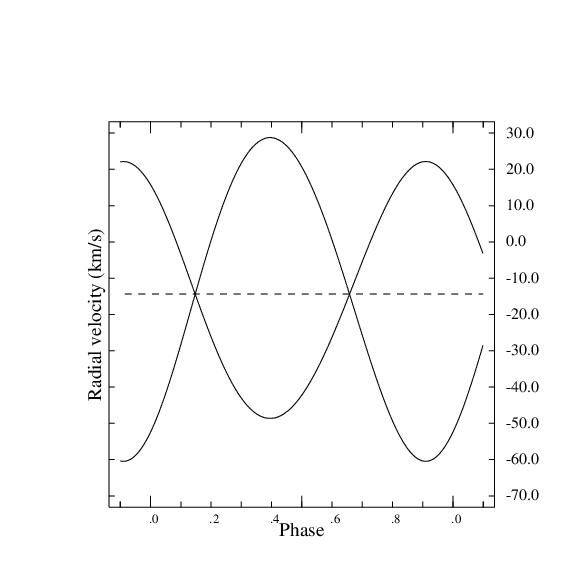Basic data (System:981)
| C1900.0 | : | 17375+6848
|
|---|
| C2000.0 | : | 173657092+68452869
|
|---|
| Comp. | : | A
|
|---|
| Magn. | : | 4.80(V)
|
|---|
| Spect. | : | F5V
|
|---|
Identifiers:
| Bayer $\omega$ Dra | BD +68 949 | GAIADR2 1637717179389828224 | GAIADR3 1637717179389828224
|
| GJ 4017 | HD 160922 | HIP 86201 | HR 6596
|
Orbit
| Element | | Value | Std. dev.
|
|---|
| Period (d.) | : | 5.2798 |
|
|---|
| Periastron time (xJD-2,400,000.0) | : | 40052.6 |
|
|---|
| Reference T0/epoch | : | JD
|
|---|
| Eccentricity | : | 0.04 |
|
|---|
| omega primary (deg.) | : | 35. |
|
|---|
| K1 (km/s) | : | 35.4 |
|
|---|
| K2 (km/s) | : | 44.6 |
|
|---|
| V0 (km/s) | : | -14.4 |
|
|---|
| sigma residuals primary | : |
|
|---|
| sigma residuals secondary | : |
|
|---|
| #RV primary | : |
|
|---|
| #RV secondary | : |
|
|---|
| Grade | : | 5.0
|
|---|
| Contributor | : | DAO
|
|---|
| Status | : | PUB
|
|---|
| Bibcode | : | 1976ApJS...30..273A
|
|---|
|
|---|
|
|
|---|
| Derived quantities (on the fly, from the above quantities) |
|---|
|
|---|
|
|
|---|
| a1sini (km) | : | 2.56807e+06 | 0
|
|---|
| a2sini (km) | : | 3.23548e+06 | 0
|
|---|
| m1sin**3 i (sol.mass) | : | 0.156369 | 0
|
|---|
| m2sin**3 i (sol.mass) | : | 0.124114 | 0
|
|---|
Note
The new elements obtained by Abt and Levy are preferred to the old ones of A.B.
Turner (Lick Obs. Bull., 4, 163, 1907) because the later observers successfully
resolved the secondary spectrum. The agreement between the two sets is good for
K1 and V0. Since e is small the differences in omega are not important. Both
Luyten and Lucy & Sweeney have revised the original computations by Turner and
have adopted circular orbits, but Abt and Levy find a larger value for e than
Turner did. A brief report on UV emission-line variability in the spectrum of
this star was published by R.A. Stern (Bull. Am. Astron. Soc., 15, 665, 1983).
A 13.2m companion at 72.3" is listed in I.D.S.: according to Abt and Levy it
shares a common proper motion with the spectroscopic binary.
Plot

Encapsulated PostScript file
T. Merle

